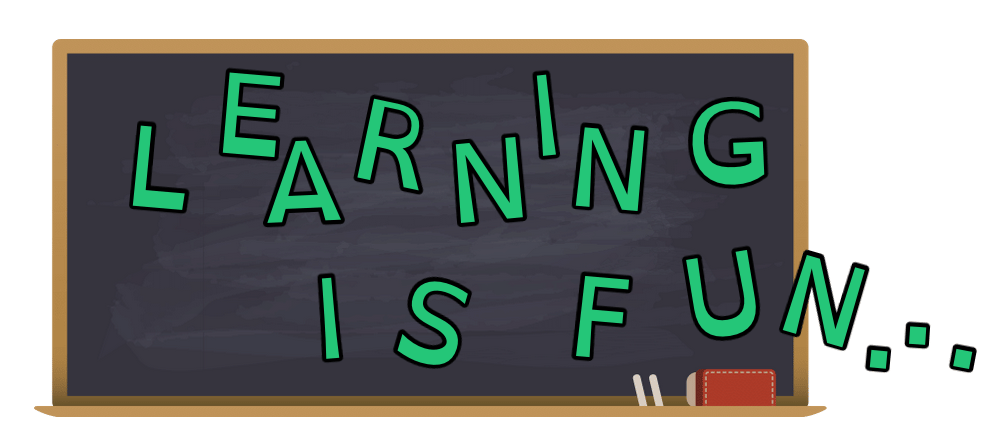Better Lessons at Home
Using teacher training tips to help you deliver better lessons at home
EDUCATION
Sara Edris
6 min read


Better Lessons At Home
"I taught my cat how to whistle"
"Amazing! Your cat knows how to whistle?!"
"No, I said I taught him. I didn't say he learned it"
It's no lie - teaching your own children at home comes with its challenges. On top of covering all the necessary material, feeling the pressure of the curriculum and trying to stay on top of everything all at once, lessons themselves are not always easy to navigate. Parents often share that they struggle to keep their children focused or they run out of ideas.
Or worse, they lose momentum during the lesson, which ends up petering out into a ball of bored, lazy mush. Having worked in different school settings, including Montessori and special schools, I've spent years building up a Mary Poppins-type bag of tips and tricks that help make lessons more engaging, more focused and more fun. And now, for the first time, I'll share them with you so you can have better home-ed lessons.
I'd love to hear your own top tips, tricks and methods, too.
Change the Space
It's hard teaching in the very place you also have dinner, or relax in the evenings, or sleep. Home educating can mean that home becomes school, the lines between them become blurred, which may not be a welcome thing. The benefit of a child going to school is that they're going to a very different place - the lessons and learning, with their associated emotions and experiences, are very separate from home. And when school is over and they come home, they know they're in their 'unwind' space. This is an important thing to think about when teaching at home. Is there a way to create a 'learning space' that can be packed away at the end of the teaching day? You could designate a corner of the room and put down a mat which you pack away after your lessons. You could use a tablecloth for classes which disappears at the end of lessons. You could even have a special cushion that your child sits on, only during class time. These small alterations can help differentiate lessons from home time, which in turn can help your child to stay focused in lessons and able to unwind outside.
Change the Outfit
One parent complained to me that her child refused to learn from her during lockdown because she insisted "You're my mum, not my teacher!" It's a common complaint for many parents and carers. I suggested she put on a particular item of clothing whenever she was 'teacher' - it could be a quirky hat, a colourful shirt or a pair of funky glasses. As with changing the space, having a visible distinction between 'parent' and 'teacher' can help your child stay focused in lessons and recognise class time from home/relaxing time.
Have a Clear Lesson Structure
In teacher training, we learnt that each lesson should have a clear structure with a lesson objective, an introduction, a main part and a plenary. A structured lesson gives you a clear direction and allows your lessons to be more effective and more efficient, because you have a clear goal and destination. When you know exactly what needs to be taught, it helps you plan effective tasks, exercises and activities. It also helps you determine when the lesson is over (so each lesson doesn't end as a clock-watching exercise but rather a clear, satisfying unit of learning).
It's true, one of the benefits of home education is that it's so child-led. But that doesn't mean you should't plan a lesson. Lesson planning will give you a clear sense of direction and help to organise your own thoughts and delivery. You can then begin with an idea of what you'd like your child to learn by the end, and meander on the way to address questions, look at interesting aspects and explore unknown areas. You then have the choice of bringing the lesson back to your original plan or taking it on a new path, depending on need.
Here are some ideas to help enrich each part of the lesson:
The Lesson Objective
A lesson objective is a focused goal and outcome that you want your lesson to reach. It is essential that you, as the teacher, know what the purpose of the lesson is and have it clearly in your mind. You can communicate it using a variety of techniques, such as
1) Writing it down as the title of the lesson
2) Coming up with it together, using targetted questions (e.g. if you want to learn about the lifecycle of a butterfly, you could begin by asking 'Do you know how butterflies become butterflies?' 'Were they always butterflies?' etc.
3) Hiding the Learning Objective in an envelope and opening it at the end of the lesson, as the Big Reveal. Get your students to guess what the Learning Objective was before showing them what it actually was.
4) Asking your child what they want to learn and collaboratively coming up with a Learning Objective.
The Introduction
This is your big sell moment. If you can hook your learner at the introduction, you're halfway there. You can use a variety of techniques to make the introduction exciting and interesting. Here are some ways that have helped me over the years:
1) First and foremost, finding it interesting yourself! If you're excited about a topic (even one that you're not actually excited about), it transfers to your learners and they feel excited about it too. If you're struggling, try to picture what makes it exciting for an expert in the field or, potentially, for your learner.
2) Introducing the topic using intrigue. Perhaps you've found a letter written by a mysterious person. Perhaps there are clues around the room left by a storybook character. Perhaps you'll need to do a hunt around the garden or the house, looking for phonic sounds. Or maybe you can show them a bowl of raisins that will be used in the lesson to help them practise division (with the bonus of eating a couple along the way).
3) A video or song to introduce the idea. If you are avoiding screen time, perhaps you can come up with little song to sing yourself.
4) Begin with a Question Wall - once you've introduced the general topic, you can create a Question Wall, writing questions on post-it notes. These can be asked again at the end of the lesson to see how much you've covered and what has been understood - a very gratifying experience.
The Main Lesson
There are loads of resources online with ideas on how to teach something. A simple search of 'Teaching ideas for...', 'How to teach...' or 'Creative activities for...' often brings back treasures.
Here are some general ideas that can be adapted to spice up most lessons:
1) Make a film - it could be a historical re-enactment, a soliloquy of one of Shakespeare's characters, a stop-motion animation of the water cycle or a cartoon explaining Newton's Three Laws of Motion.
2) Make a poster - who doesn't love making a poster? The colours, the boxes, the pictures, the bubble writing. This is a great way to gather, sort and map out all the information they've been learning.
3) Write a children's book of what you've learnt. This is another great way to consolidate the learning and highlight any gaps in knowledge. When your child has to explain the concept in a more simplified way, they'll also be explaining it to themselves - and you can check they've fully understood everything. If you know a younger child - a sibling, cousin or neighbour - you could always incentivise the activity by gifting the book to them. You can have fun designing the front cover and writing a blurb, too.
4) Cut up questions from a worksheet into strips and mix them up. Your learner picks out questions at random and answers them. This works on the joy of autonomy and choice in learning, and is a simple way of making worksheets more interesting.
The Plenary
1) Pose some questions from an unknown person, which your learner has to answer.
2) 'Another child answered x but they've made a mistake. What is the correct answer and how would you explain it to them?' Offer a few incorrect answers (using mistakes made by your learner throughout the lesson). Your learner then gets the satisfying job of correcting the mistake and playing 'teacher' themselves.
3) Guess what the learning objective was before revealing it from the envelope (see point 3 from the Learning Objective).
4) Answer some questions from the Question Wall (see point 4 from the Introduction). Add more questions to the wall too. These can help inform future Learning Objectives and lesson ideas.
Any more ideas?
And there you have it - some ideas to help keep lessons focused, fun and interesting. I'd love to hear your thoughts, ideas and own top tips for making lessons more engaging - please email over your ideas and we can include them in this post.
Tawfiq Books
London, UK
info@tawfiqbooks.com
©2025 Tawfiq Group Ltd. All Rights Reserved
Shopping with us
About


